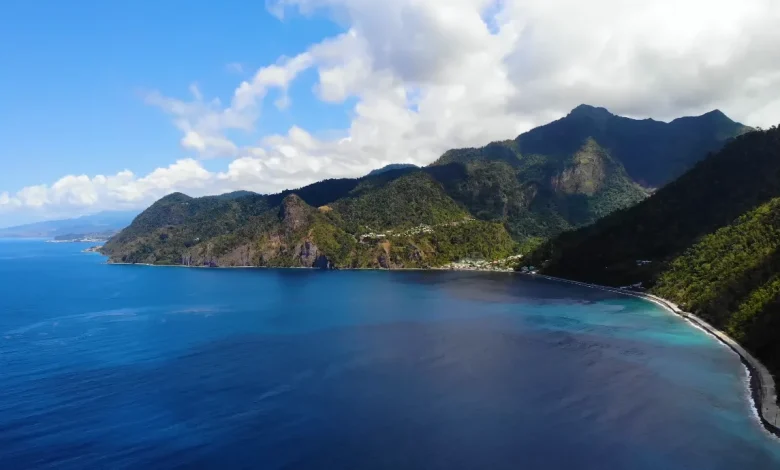Dominica’s Coastline

Dominica’s coastline is an impressive blend of natural beauty and diverse terrain, shaped by volcanic activity and bordered by the Caribbean Sea on the west coast and the Atlantic Ocean on the east coast. Dominica’s coastal geography includes scenic features, from rocky cliffs to black and white sand beaches, with a rugged landscape marked by rivers like the Layou River, Pagua River, Rosalie River, and White River, all flowing into the sea. The Edward Oliver Leblanc Highway stretches along much of the western shoreline, connecting coastal villages and providing stunning views of the Caribbean Sea.
Dominica’s Coastline Beaches and Marine Life
The West Coast is dotted with accessible sandy beaches such as Mero Beach and Purple Turtle Beach, known for their calm, turquoise waters, perfect for swimming and family outings. Champagne Beach, famous for its underwater geothermal activity, offers visitors a unique “champagne snorkelling” experience with warm bubbles rising from the ocean floor, attracting snorkelers and divers to its coral reefs. Meanwhile, Scotts Head, where the Caribbean Sea meets the Atlantic, is one of the most remarkable spots on the island, offering snorkelling and scuba diving at the Scotts Head Pinnacle and scenic trails up to the peak for panoramic views.
The East Coast is more rugged and secluded, with dense rainforests and dramatic cliffs. This coastline is home to the Kalinago Territory, where the indigenous people of Dominica, the Kalinago, preserve their cultural heritage and maintain traditional fishing practices. The east coast’s beaches, such as Number One Beach and the vibrant sands of Pointe Baptiste, add to Dominica’s unique character with their untouched, natural beauty.
Conservation Efforts and Coastal Management
Organizations such as the Dominica Marine Association and the Nature Enhancement Team (NET) lead efforts to protect Dominica’s coastline. These groups collaborate on initiatives to preserve coastal areas, address challenges like erosion, and protect marine habitats around popular spots like the Soufriere Scotts Head Marine Reserve (SSMR). The SSMR supports sustainable tourism and fishing regulations, helping to maintain the area’s biodiversity. The coastline’s coral reefs and marine ecosystems are protected within Cabrits National Park, another prominent area dedicated to preserving Dominica’s natural aquatic habitats.
Cultural and Ecological Significance
Dominica’s coastline boasts ecological diversity and reflects a deep cultural significance, especially within the Kalinago Territory. The rivers flowing into the coast bring nutrient-rich waters that support the coastal ecosystems, nourishing coral reefs and contributing to the island’s biodiversity. The Layou River and other rivers are crucial to the inland and coastal ecosystems, allowing tropical fish and marine plants to thrive. This blend of cultural heritage and ecological richness solidifies Dominica’s reputation as the “Nature Isle of the Caribbean”, making it a popular destination for eco-tourism and nature conservation.




